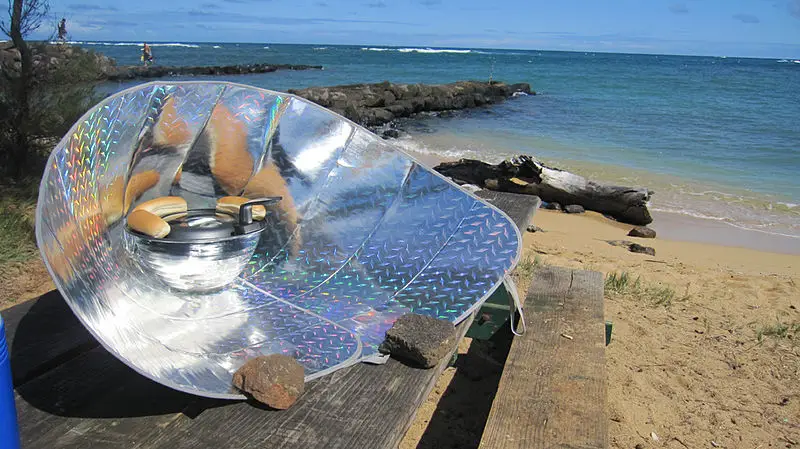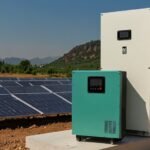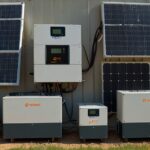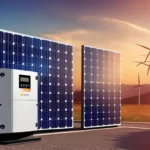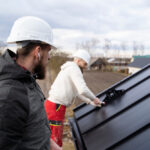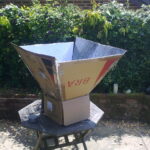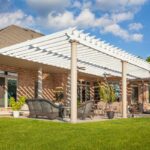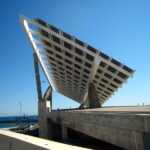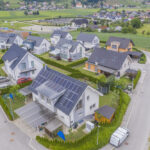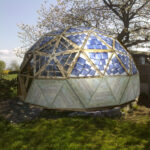The use of solar energy in the home is no longer restricted to just lights or fans. At this point in time, the sun can be used to power almost every appliance that would otherwise require the use of electricity. This includes phone chargers, freezers, and even air conditioning systems. But there is one solar device in particular that can cut down on pollution caused by power plants and contribute to communities all over the world while at the same time preparing snacks i:e. Solar Ovens
How do Solar Ovens Work?
Solar ovens use a different method to harness the sun’s heat; rather than transforming the energy into electricity, they use the captured photons. Photons enter the oven through the see-through glass top and impact the interior of the insulated box with the help of metal reflectors placed around the oven to increase light input.
A black metal pot is placed in the oven’s center to best make use of the heat generated by the absorption of light by the pot. The heat will try to escape to a cooler area once the cooking pot has warmed up more than the air around it.
However, it is unable to escape the building, therefore it is imprisoned behind the glass. Due to the metal pot’s rapid heating from the oven’s reflected heat, the interior temperature can reach a blistering 400 degrees Fahrenheit.
The greenhouse effect is a term used to describe what happens when heat builds up inside an enclosed space, such as a building or a car left outside on a bright day. The windows let in sunlight, which quickly warms up the seats and the rest of the car.
Solar oven functions in the same way, except with these small insulators, you may use a regular pan instead of your car’s dashboard.
Types of Solar Ovens
First, you need to decide what you plan on cooking the most in your solar oven. Even the simplest homemade variations are perfect for S’mores, but they won’t brown the meat on a steak.
If a thermometer isn’t built into your oven, you should get one. If you intend to take your solar oven with you on the road, there are models that are more portable and disassemble quickly.
Cooking meat on a solar cooker can be dangerous, so stick to vegetables until you get the hang of it. There are several varieties of solar ovens, so here are some helpful hints for using them.
Box Solar Ovens
Box ovens often offer the most room for cooking and frequently have the capacity to facilitate the preparation of numerous pots of food at the same time. To ensure that the maximum amount of light is able to reach the container, the clear surface that is located on top of the box should be kept clean at all times.
Make every effort to avoid opening it, as doing so will allow heat to escape. Having said that, if steam were to hide the top of the box, it might restrict the amount of sunlight that could enter. In this case, the steam would have to be released.
Make use of dark, shallow pans because this will assist in absorbing the most amount of sunlight. Baking, cooking beans, and other items that require a longer period of time in the oven are perfect uses for these solar ovens. To speed up the preheating process, you can prepare the container by inserting a dark brick or stone and then putting it in the sunlight.
Panel Solar Ovens
Panel ovens are often lightweight and easy to carry, making them an excellent choice for persons who are constantly on the go. Having said that, they are not capable of reaching the temperatures that can be achieved in the box and parabolic ovens.
When working with one of these ovens, it is best to use a black pan or glass jars that have been painted black. To further concentrate the heat, these containers are then typically placed in an oven bag that has been sealed or some other type of transparent enclosure that is safe for use in an oven.
Parabolic Solar Ovens
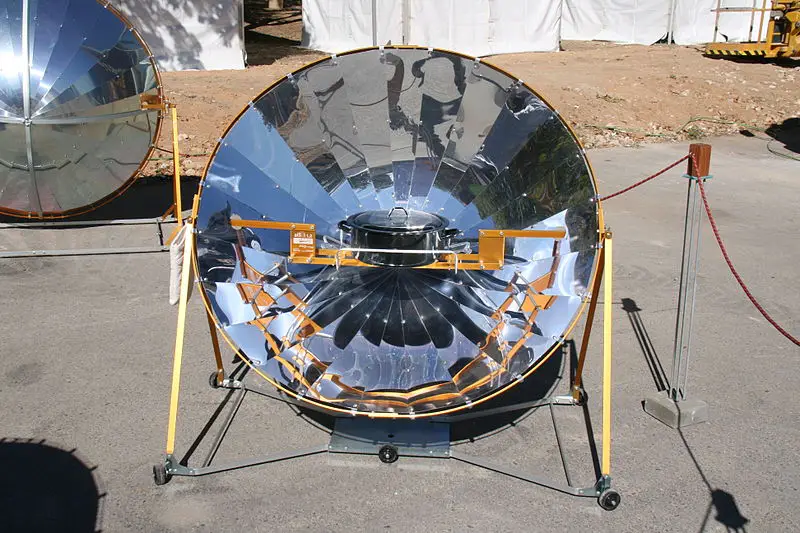
Due to the fact that these ovens concentrate heat to a single point, they are capable of rapidly reaching high temperatures; but, in order to keep that temperature constant, they need to be rotated in accordance with the movement of the sun.
This method, which is often used in the rural provinces of China to boil water for the purpose of purifying, works best with jars of a dark tint and a tight seal. Because they can achieve greater temperatures much more quickly than box or panel ovens, parabolic ovens need to be monitored more carefully than those types of ovens
Homemade Solar Ovens (DIY Solar Ovens)
It’s the perfect time for one of our go-to projects that the whole family can get involved in, what with the kids having their afternoons to themselves now that summer is in full gear.
Constructing a homemade solar oven is an excellent way to acquire fundamental knowledge in the fields of physics, solar energy, and culinary arts. In addition to this, it’s a lot of fun because everybody gets to consume the end product. You will only need twenty minutes of your time and a few dollars worth of goods.
Material Required For Homemade Solar Ovens
- Box made of cardboard
- Aluminum foil.
- For use on your cooking surface, a skillet or pan that is black
- Materials used for insulation, such as polystyrene, packing foam, newspaper, or fiberglass.
- Food wrap made of transparent plastic
- Tape made of cloth, such as duct tape or gaffer tape
- Thermometer for the kitchen
Steps for Making Homemade Solar Panel
Step 1 of DIY Solar Oven
Find a sturdy cardboard box to use. A box with a volume of between one and two cubic feet, or around the size of a standard beer cooler, should be your goal.
You will need to cut enough of the insulating material so that it can completely line the inside of the box. Do not cover the flaps; rather, cover the bottom and sides. You want the air inside the box to get as hot as possible, and this layer will insulate the oven so that heat will not be lost through the edges of the box too rapidly.
Your goal is to get the air within the box as hot as possible. Insulation is used in a manner analogous to that of the oven in your kitchen, which then serves to trap heat inside.
Step 2 of DIY Solar Oven
Wrap the foam in aluminum foil and secure it with tape to keep it in place. The bright, reflecting metal ensures that the sun’s heating rays continue to bounce about inside the container, which results in the interior being heated up more effectively.
Following this step, cut four pieces of aluminum foil, each of which should be slightly larger than one of the flaps on the box. Take these strips of foil and wrap them around the inside-facing sides of each flap. Put some tape on the corners to keep the foil from curling up.
You will position these light-reflecting flaps in such a way that they will direct rays of sunshine into the box, which will assist raise the temperature on the inside of the oven.
Step 3 of DIY Solar Oven
Put a surface suitable for cooking within the box. The food that you wish to reheat should be placed in this compartment. Make use of a skillet made of cast iron, a small sheet pan, or a metal plate.
Make sure to make use of something dark and heat-resistant because dark cooking surfaces absorb more heat than their silver or white counterparts.
Step 4 of DIY Solar Oven
Wrap the box’s opening with a sheet of plastic food wrap. Avoid closing the box by covering the flaps with plastic wrap instead forming a square or rectangular window pane to fit inside the space created by the open ends of the box. This unmistakable wall is crucial. It’ll let the light in and help keep the heat in your oven.
You can save time and effort by constructing a window frame out of spare cardboard to fit over the box’s opening and then affixing the plastic wrap to the frame using tape or clips. Whenever you need to get into the oven, you can just lift the entire window away and reach in.
Step 5 of DIY Solar Oven
Imagine it’s a bright and sunny day, then place the box in the sun’s rays. If it is necessary to do so, turn the box so that it is facing the sun, and then angle the flaps so that they reflect as much light as possible into the box.
Put your meal on the cooking surface, place it inside the box, and then cover it with plastic wrap cover to make sure it doesn’t get cold.
It is possible to monitor the temperature of the meal without having to remove the plastic wrap if a wireless thermometer is inserted inside the item being monitored and left there.
And don’t forget to use a potholder to remove the dish from the oven! If chicken fingers can be cooked successfully in the heat, then your fingers will also be able to cook successfully.
Conclusion
While it’s not very practical to replace your high-octane electric oven with a solar cooker, there are still things you can do to lessen your home’s impact on the environment.
The more we learn about how to put solar energy to use, the more optimistic we get about the future and how much it will better the earth and our lives.

